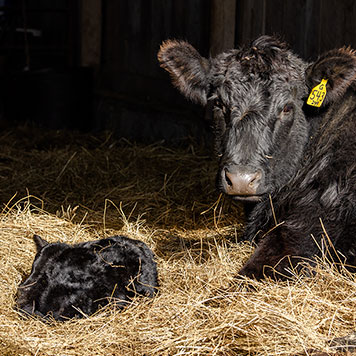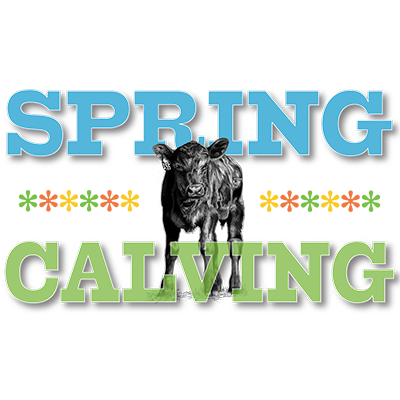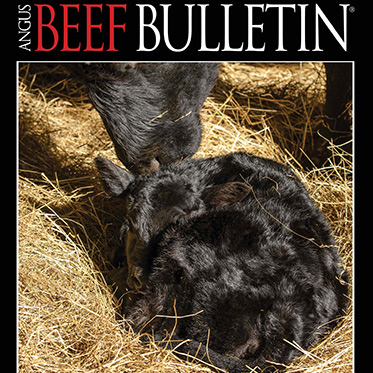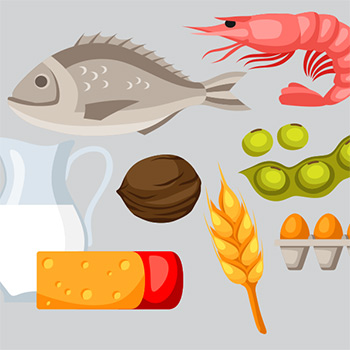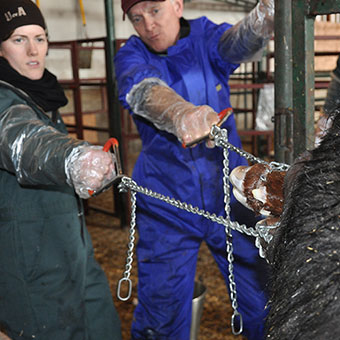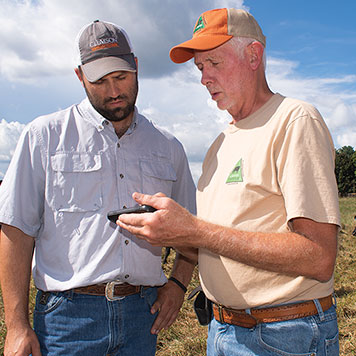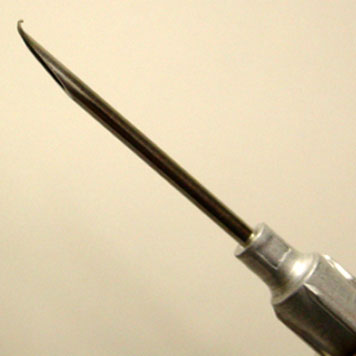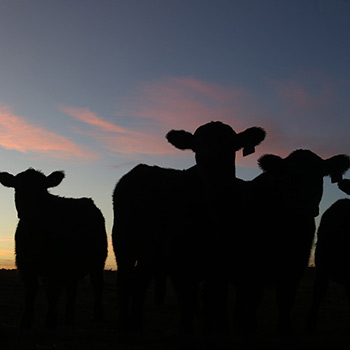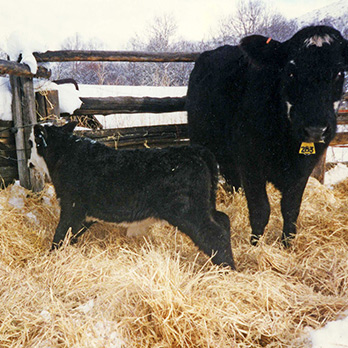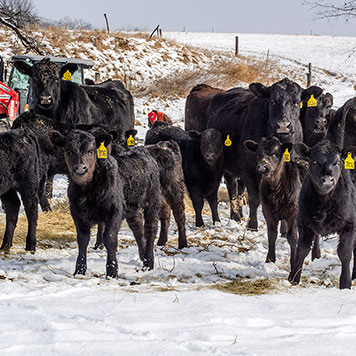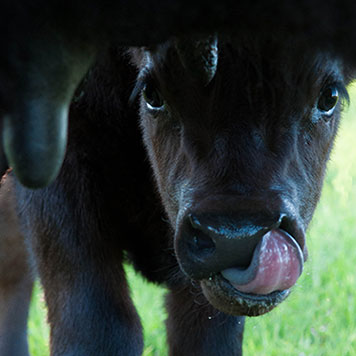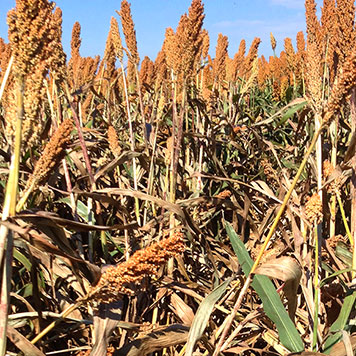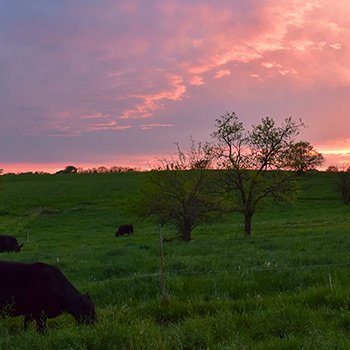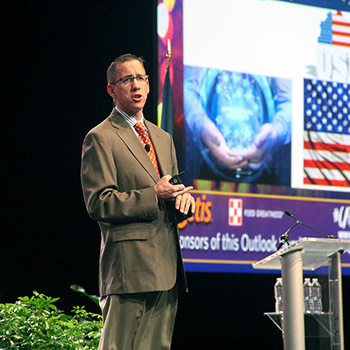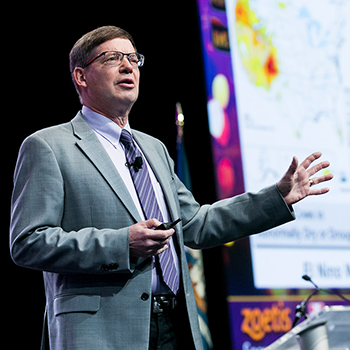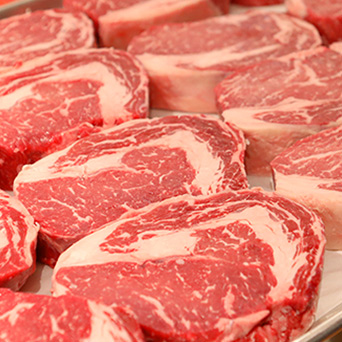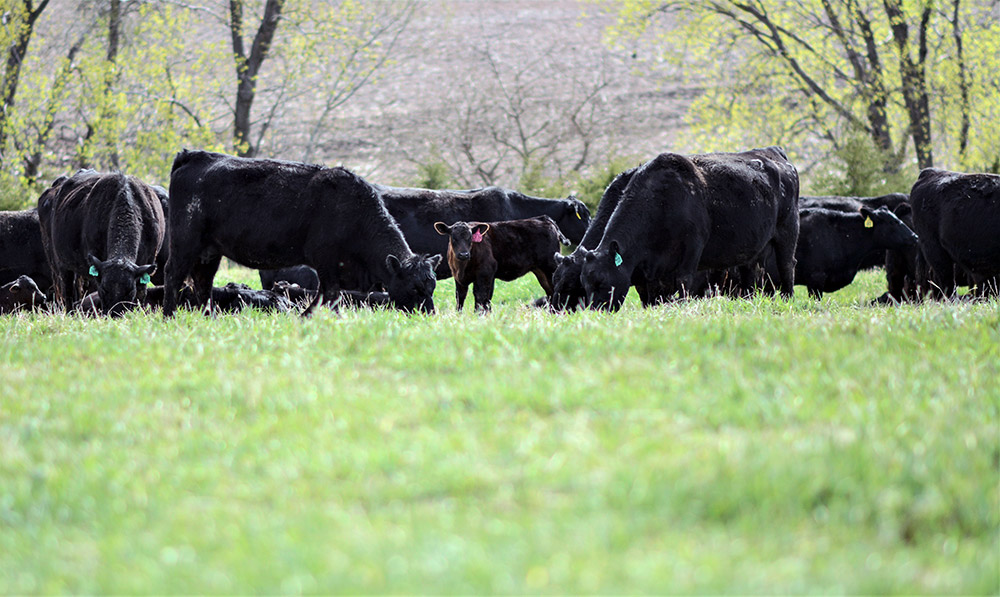
Always Eating for Two
Nutrition matters for each stage of calf development.

How many months out of a year is a mother cow just eating for herself?
Hopefully none, says Janna Kincheloe, North Dakota State University animal scientist.
“The cow should either be lactating or developing a fetus at all times,” she says. “If she’s not doing that, she’s probably open and should be on the trailer headed to town.”
 |
“The cow should either be lactating or developing a fetus at all times,” says Janna Kincheloe. “If she’s not doing that, she’s probably open and should be on the trailer headed to town.” Kincheloe (right) and Amanda Blair spoke at Cattlemen’s College, Jan. 30, as part of the Cattle Industry Convention and Trade Show in New Orleans. |
That emphasizes the importance of cow herd nutrition year-round.
“Think about what your cows might encounter during gestation,” says Amanda Blair, South Dakota State University meat scientist, who ranches with her family near Sturgis. “We encounter swings in forage quality and quantity, changes in the diet throughout the year and definitely weather extremes.”
The challenges are unique in each region, but they all culminate in an area of study that’s gaining the attention of bovine researchers across the country: fetal programming.
It was generally known that cow nutrition affects near-term outcomes like calf size and vigor.
“We’ve begun to understand the importance of the gestational environment,” Blair says, “maximizing offspring potential for a host of production outcomes such as health, reproductive performance and even beef quality.”
DNA is a script.
“During development there’s actually some flexibility as to which cells can be produced. The environment can modify expression of the DNA script,” she says, offering this movie analogy.
True Grit featuring John Wayne looks different than True Grit with Jeff Bridges — same script, different expression, she says.
“Alterations to the uterine environment can lead to changes in the gene expression,” she says. “We think about genes like we can turn them up or down, change the expression or some products of the expression.”
What can be done and when?
“We know that in a forage-based system we’re going to have nutrient deficiencies,” Blair says. “Nevertheless, there are still a lot of things we don’t know and a lot of conflicting results.”
One certainty: It’s not as easy as picking one stage to focus on, the scientists say.
A heartbeat is apparent at 21 days gestation. Sex organs develop around 45 to 60 days after conception.
“Survival organs, such as the heart and brain, are going to have an increased priority for nutrients at this stage,” Kincheloe says. “If you have a nutrient deficiency during this period, tissues will be affected differently, depending on how necessary they are.”
Ovarian follicles develop, the placenta grows, initial muscle cells form — all before the second trimester.
If those processes are negatively affected, anything from reproduction to vigor and lifelong performance could suffer. Many pregnancy losses are blamed on intrauterine growth retardation (IUGR), and Kincheloe says inadequate maternal nutrition contributes to that.
A Wyoming study showed cows restricted to 68% nutrient requirements had 40% IUGR incidence and a 20% reduction in fetal weight.
An artificial insemination (AI) study showed mothers restricted to 60% of requirements during the first trimester, then fed 140% for the rest of gestation, had a 40% reduction in the antral follicle count of daughters, which could reduce fertility in that next generation.
“This occurred with no differences in birth weight, no difference in placental characteristics; weight at puberty was similar,” she says.
There isn’t always a good way to detect the insults.
It’s often much easier to track performance and quality grade than it is reproductive changes, and fetal programming matters as much to the latter as it does the former.
Blair says a fed steer spends about 40% of its life in utero. “Gestation is actually a pretty significant segment of their lives.
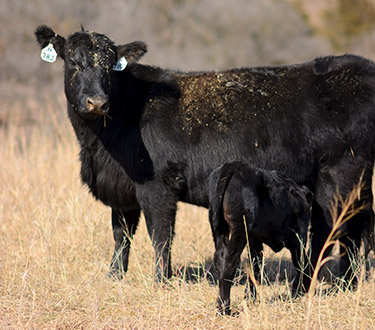 |
An artificial insemination (AI) study showed mothers restricted to 60% of requirements during the first trimester, then fed 140% for the rest of gestation, had a 40% reduction in the antral follicle count of daughters, which could reduce fertility in that next generation. |
“Mid-gestation is a key developmental time point for both muscle and fat,” she says, noting the fibers present in the first few months serve as a ‘scaffolding’ for secondary fiber development.
“Livestock species are born with all the muscle fibers they’re ever going to have,” she notes. “We can certainly make them bigger, and we do this through the process of muscle fiber hypertrophy or growth, but we can never make more.”
Yet the evidence is conflicting: supplement nutrition or don’t? Add more protein or not? There is a biological effect, but what’s the economic implication?
“This is a growing body of research, with more and more being conducted every day that’s adding to our knowledge,” Blair says. “We don’t fully understand the mechanism going on, so there’s more work to be done.”
Producers should watch for further updates and keep a good read on their cows, because one thing is obvious. When it comes to calf success, she says, “What mom needs matters.”
Kincheloe and Blair spoke at Cattlemen’s College, Jan. 30, as part of the Cattle Industry Convention and Trade Show in New Orleans.
Editor’s note: Miranda Reiman is the director of producer communications for Certified Angus Beef LLC. Photos courtesy CAB.
